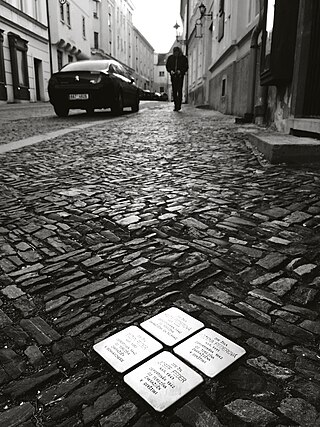Self-guided Sightseeing Tour #3 in Halle (Saale), Germany
Legend
Tour Facts
4 km
69 m
Experience Halle (Saale) in Germany in a whole new way with our free self-guided sightseeing tour. This site not only offers you practical information and insider tips, but also a rich variety of activities and sights you shouldn't miss. Whether you love art and culture, want to explore historical sites or simply want to experience the vibrant atmosphere of a lively city - you'll find everything you need for your personal adventure here.
Individual Sights in Halle (Saale)Sight 1: Heilig-Kreuz-Kirche
_Heilig-Kreuz-Kirche.jpg)
The Holy Cross Church in Halle (Saale) is a Catholic parish church that was built between 1990 and 1991. It replaced the predecessor church built on the same site in 1965/66.
Sight 2: Opernhaus
_Opernhaus.jpg)
The Halle Opera House is an opera house in Halle, Saxony-Anhalt. Originally named the Halle Town Theatre, the theatre was built in 1886 by Heinrich Seeling. A bomb attack on 31 March 1945 destroyed much of the original building. Restorative work ensued a few years later, and the theatre reopened in 1951 under the name Landestheater Halle. In January 1992 it was renamed to its current title. The theatre is currently used for performances of opera, ballet, and orchestral concerts. It is also the main performance venue for the annual summer Handel Festival held in the city.
Sight 3: Betsäule
_Betsäule.jpg)
The Prayer Column of Halle is a tall Gothic wayside shrine from the pre-Reformation period, which stands today on the Universitätsring.
Sight 4: Löwengebäude
The Lion Building is the main building of the Halle campus of the Martin Luther University Halle-Wittenberg. It is located on Universitätsplatz in the old town of Halle (Saale).
Sight 5: Alfred Willi Tilke
A Stolperstein is a ten-centimetre (3.9 in) concrete cube bearing a brass plate inscribed with the name and life dates of victims of Nazi extermination or persecution. Literally, it means 'stumbling stone' and metaphorically 'stumbling block'.
Sight 6: Friedemann-Bach-Haus
The Wilhelm Friedemann Bach House is a cultural site in Halle in Saxony-Anhalt, Germany. The composer Wilhelm Friedemann Bach (1710–1784), eldest son of Johann Sebastian Bach, lived here during part of his career; the building now has an exhibition about W. F. Bach and other composers who lived in Halle.
Sight 7: Neue Residenz
From 1644 onwards, Neue Residenz was the name given to the four-winged building complex in the city of Halle an der Saale, which was built in 1531 as New Gebew. The imposing building, built by Cardinal Albrecht of Brandenburg, is the result of the early import of Italian Renaissance ideas and motifs into central and northern Germany and is one of the most important buildings of the early Renaissance in Germany. It is an unpaved building complex with the character of a residence and with a formerly close connection to an elaborate garden beyond the city wall.
Sight 8: Halle Cathedral
Halle Cathedral is an Evangelical Reformed Church, and is the oldest surviving church in the old part of the city Halle, Saale. Beside it resided the Archbishop of Magdeburg, who ruled the city for a long period. Albert of Brandenburg remodelled the church's exterior from 1520 onwards and built the neighbouring Neue Residenz, aiming to make the church one of the most influential and powerful monasteries north of the Alps.
Sight 9: Neumühle
The Neumühle in Halle (Saale) is a former grain mill that was first mentioned in 1283 and rebuilt in 1582. In the list of monuments of the city of Halle, the mill is listed under the registration number 094 04884.
Sight 10: Neuapostolische Kirche Halle
_Neuapostolische-Kirche-Halle.jpg)
The building of the New Apostolic Church Halle is located on Pfälzer Straße in the northern city centre of Halle (Saale). The congregation of Halle belongs to the church district of Leipzig within the New Apostolic Church of Central Germany.
Sight 11: Moritzburg
The Moritzburg is a fortified castle in Halle (Saale), Germany. The cornerstone of what would later become the residence of the Archbishops of Magdeburg was laid in 1484; the castle was built in the style of the Early Renaissance.
Sight 12: Nationale Akademie der Wissenschaften Leopoldina
"Zu den drei Degen" is the name given to a Masonic lodge in Halle (Saale) that existed from 1765 to 1934.
Sight 13: Alfred Silberberg
The list of stumbling stones in Halle (Saale) contains all stumbling stones that were laid in Halle (Saale) as part of the art project of the same name by Gunter Demnig. They are intended to commemorate victims of National Socialism who lived and worked in Halle. By May 2024, a total of 288 stones had been laid at 131 addresses; further stones are being planned.
Sight 14: Sankt-Laurentius-Kirche
_Sankt-Laurentius-Kirche.jpg)
St. Laurentius zu Halle is a Protestant parish church from the 12th century in the Mühlweg district of the city on the Saale.
Share
How likely are you to recommend us?
Disclaimer Please be aware of your surroundings and do not enter private property. We are not liable for any damages that occur during the tours.
GPX-Download For navigation apps and GPS devices you can download the tour as a GPX file.
_Löwengebäude.jpg)

_Friedemann-Bach-Haus.jpg)
_Neue-Residenz.jpg)
_Halle-Cathedral.jpg)
_Neumühle.jpg)
_Moritzburg.jpg)
_Nationale-Akademie-der-Wissenschaften-Leopoldina.jpg)
_Eduard-Oppenheim.jpg)